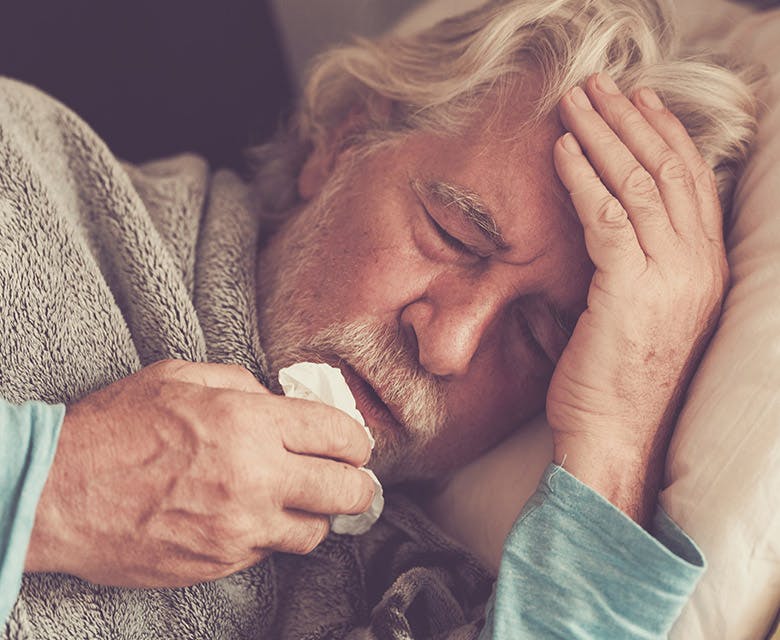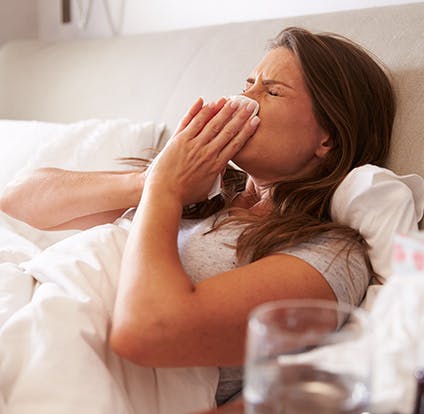How to lower a fever
A fever is a normal physical response of your body when there’s an infection. It’s defined as when a person’s body temperature rises above 38 °C (100 F). That rise in temperature often happens during common illnesses like the flu as your body fights off germs.
Most fevers can be treated with over-the-counter medications such as Panadol (paracetamol) or ibuprofen.
But what exactly is a fever?
When there’s an infection in your body, the immune system usually goes into overdrive to try and treat it. This can raise your body temperature in the short-term.
While an elevated temperature is normal when you have the flu or a common cold, sometimes it can point to a more serious infection.

Is it a fever?
Your normal body temperature can vary depending on the time of day and your activity level. For most adults, your body temperature will usually be a little lower after you wake up and a little higher at night. It may also be higher after you’ve gone for a long run.
But a higher than normal temperature could be a fever. So how do you know when you have a fever? What are the symptoms?
The top three signs of a fever include:
1. Raised temperature: A higher-than-normal body temperature that exceeds 38 °C (100 F) in adults or children is considered to be a fever. The forehead may be warmer than usual to touch. But the only reliable way to measure a high temperature is by using a thermometer.
2. Chills and shivering: A fever is a sign of your body fighting an infection. When your body temperature rises, it can cause shivers and chills.
3. Sweating: Increased sweating is common with a fever. It shows that your body is getting a handle on the infection and tries to cool down through sweat. Consequently, your temperature may get lower, but it doesn’t mean that the fever is over or that it won’t return.
Fever symptoms: What to look out for?
Although a raised body temperature is the definition of a fever, it’s often accompanied by other symptoms.

- Confusion
- Severe pain
- Skin rash
- Vomiting
- Diarrhoea
- Extreme fatigue
- Convulsion
If you experience any severe fever symptoms, it’s important check your temperature right away and go see a doctor. A high temperature can be caused by many different types of infections and it’s important to address the underlying cause promptly in order to get better.
How do I take my temperature?
Touching the forehead is a classic method to determine if someone’s temperature is raised, but it’s not very reliable. The only accurate way to check if you or someone else has a fever is by measuring with a thermometer. Always read the label of the thermometer you are using.
Important! If your temperature is higher than 38 °C (100 F), go see a doctor. High-grade fevers can be life-threatening if not treated promptly.
Mouth |
Ear |
Oral thermometers are a good option to measure temperature in adults. You should not drink anything 15 minutes before you take your temperature by mouth to avoid that a hot drink could affect the reading. Keep the thermometer underneath the tongue for around 20 seconds and keep your mouth closed. You can wash the device with a bit of soap afterward to keep it clean. |
Thermometers that are to be inserted into the ear are the most popular because they’re easy to use and very accurate. They’re also great to use with children for that reason. When you hold the thermometer to your ear, an infrared sensor will determine your temperature and the device displays a reading. But be careful not to insert the device too far into the ear canal. |

What causes a fever?
An elevated body temperature is usually a sign of an infection of some kind but it can sometimes be difficult to pinpoint why you have a fever. The underlying causes can determine the severity and duration of your fever.
The more common conditions that can trigger a high temperature include:
1. Infections: From flu to the common cold to pneumonia to strep throat—a fever is a common sign of a viral or bacterial infection. You should check for other signs such as a runny nose, cough, body aches, and fatigues.
2. Inflammatory diseases: Some conditions like rheumatoid arthritis and Crohn’s disease can cause your body temperature to rise.
3. Immunisations (e.g. tetanus) or certain medications like antibiotics can cause a fever.
4. Tropical disease: e.g., Malaria can cause fever.
5. Dehydration
If you’re not sure what’s causing your higher-than-normal temperature or if it doesn’t go away even after taking medication like Panadol (paracetamol), visit a doctor.

How to help lower a fever with fever medicine?
Chills, shivers and the feeling that you’re overheating will make you want to head straight to bed. If you have any other symptoms, you may not be able to go about your day in the normal way.
Take a break. Because a fever is a sign of your body actively fighting an infection, you can support this natural function by resting up.
Try these self-care options to help treat a fever:
1. What to take for fever relief. To bring down your high temperature, take an antipyretic, or fever reducer, like paracetamol or ibuprofen at the recommended doses. People should take medication as per the label. Stay hydrated. Because your body is heating up, it’s important to drink plenty of fluids when you have a fever. Water is usually best, especially when you’re feeling sick and vomiting. If you have shivers and are feeling cold, you might choose a warm chamomile tea instead. Avoid alcohol as it can dehydrate you further.
2. Rest. Get plenty of bed rest and sleep to help your body fight the infection.
3. Dab a hot forehead with a wet towel. If you’re sweating, you can put a moist towel across your forehead or at the back of your neck. But avoid cold baths or alcohol rubs as they may cause shivering, which can raise temperature.
4. Natural remedies. There are plenty of recommended natural remedies online but few are scientifically proven.
Experts agree that fevers can be beneficial because they fire up the body’s immune response. But when your symptoms persist for more than three days despite home remedies, it’s time to see a doctor.












